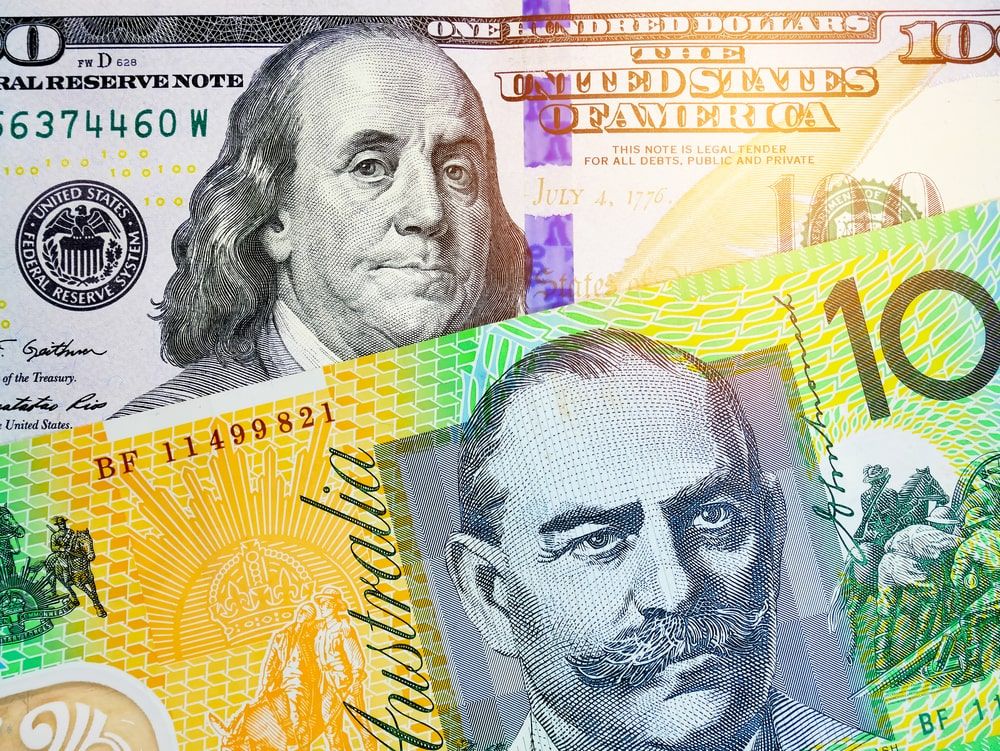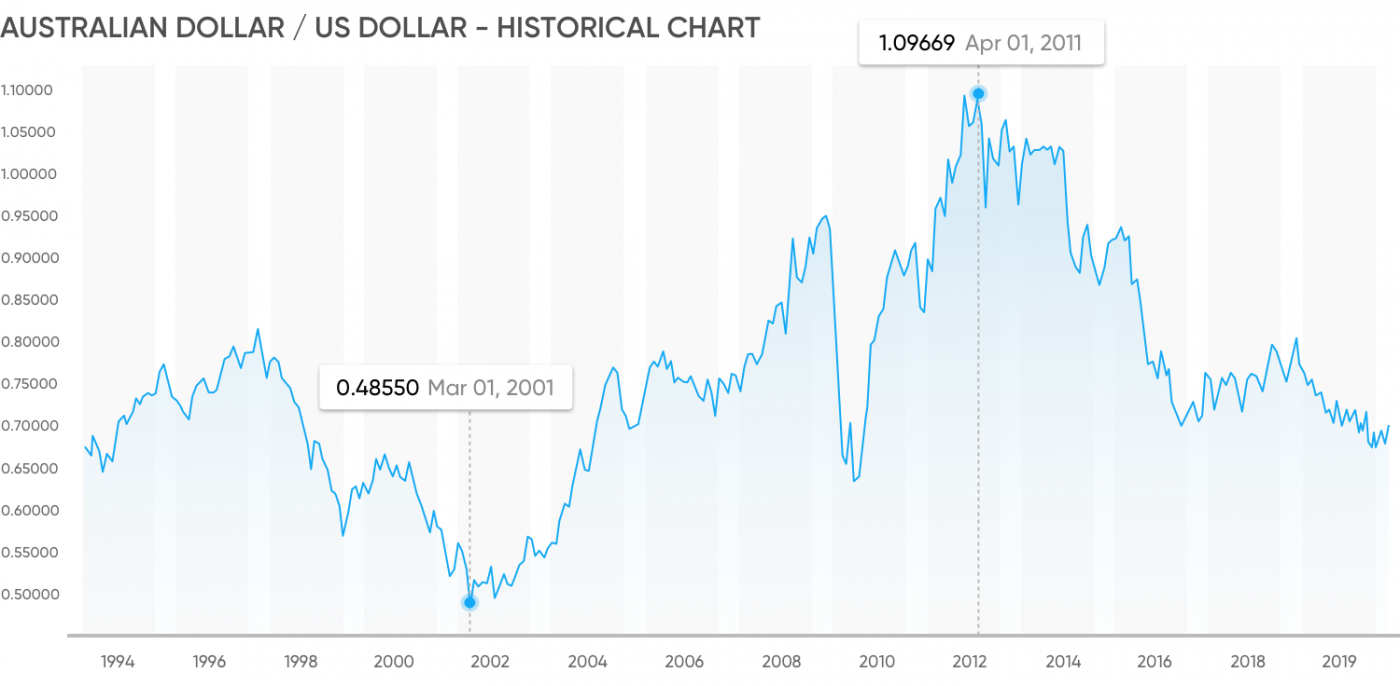Your guide to trading the AUD/CAD Forex pair

Why is AUD/CAD important to traders?
AUD/CAD is globally traded, with regularly published information available on the economic and political factors of each country, which can influence the pair’s value.
Below, we'll explore Australian dollar to Canadian dollar rates to help you stay informed about the forex market.
Sign up with Capital.com to trade [120]+ forex CFDs.
AUD/CAD trading hours
The forex market is open 24 hours a day, five days per week, but there are times when the AUD/CAD currency pair experiences heightened volatility. AUD/CAD is generally most active during the overlap of the Sydney and North American sessions, between 8am-12pm Sydney time and 6pm-10pm Toronto time.
AUD/CAD history
Australia used the British pound until the 1960s, when it adopted a decimal system and introduced the Australian dollar to simplify the currency structure. As the country is so close to the Asian continent, import and export between Australia and China has historically influenced the Australian dollar. Today, this relationship continues to influence AUD volatility.
While Australia transitioned to the Australian dollar in 1966, Canada had already adopted the Canadian dollar over a century earlier, in 1858. The Canadian dollar was introduced to replace the Canadian pound as part of a transition to a decimal-based monetary system, influenced in part by the US model. Today, its economy ranks as the ninth-largest in the world.
Discover the strongest economies in the world.

What influences AUD/CAD rates?
As with trading between any currency pair, it's important to stay informed about the factors that can affect the AUD/CAD pair – such as economic data, trade balance, and central bank policies.
Role of AUD
Factors that can influence the Australian dollar value include economic and political factors. Australia is a major commodities producing country, which means that import and export data serve as a key indicator for AUD demand. For decades, the price of the Australian dollar stayed strong due to the export of materials such as coal, iron ore, and other commodities.
In Australia, decisions by the central bank, the Reserve Bank of Australia (RBA) – such as cash rate (interest rate) adjustments – can play a role in the value of AUD.
Role of CAD
Similarly, central bank policy decisions made by the Bank of Canada can influence the Canadian dollar, although it hasn’t directly intervened in the currency since 1998.
Canada is a major exporter of materials and commodities, including wood, grain, minerals, and petroleum. This is very often a factor in the growth of the Canadian dollar. Its close proximity to the US has strengthened Canada’s import/export industry and helps CAD maintain its position as one of the strongest forex currencies.
How to trade AUD to Canadian dollar
There are a few ways to trade AUD/CAD. You can trade the pair directly through a forex spot market. Alternatively, you could use derivatives such as contracts for difference (CFDs) to speculate on rising or falling forex rates without actually owning the underlying currencies.
CFDs are traded on margin, and leverage amplifies your exposure to both gains and losses.
Traders combine technical indicators and fundamental analysis, such as chart patterns, economic data releases, and third-party forecasts, with trading strategies to inform their decisions. For example, support and resistance levels can help when estimating potential entry and exit points.
*Awarded ’Best in Class 2025’ by ForexBrokers.com for Ease of Use, Commissions & Fees, TradingView, and more; ‘People’s Choice 2025’ by Good Money Guide.
Trade AUD/CAD CFDs with us.
Trade Australian Dollar / Canadian Dollar CFD
Past performance is not a reliable indicator of future results.
Why trade AUD/CAD CFDs with Capital.com?
Advanced technology at its core – our news feed provides you with personalised and unique content depending on your preferences, the SmartFeed includes analysis and educational material to help inform your decisions – with videos, articles, and news to sharpen your trading strategy.
Trading on margin – CFDs are traded on margin, which involves leverage. Leverage beyond 1:1 magnifies both potential gains and potential losses.
Contracts for difference (CFDs) – when you trade AUD/CAD CFDs, you’re speculating on whether its rate will rise or fall. You can go short or long, set stop-loss* and take-profit orders to manage risk, and apply trading scenarios that align with your objectives.
All-round trading analysis – the browser-based platform allows traders to shape their own market analysis and forecasts with sleek technical indicators. For instance, a trader could choose to have AUD/CAD analysis and forecasts as a big part of their feed. Capital.com provides live market updates and various chart formats, available on desktop, iOS, and Android.
Focus on safety – Capital.com puts a special emphasis on safety. Licensed by the FCA, MENA, ASIC, SCB, and CySEC, adhering to local regulations while prioritising our clients’ data security. You can submit withdrawal requests 24/7 – with funds stored in segregated accounts in accordance with regulatory requirements.
*Stop-loss orders aren’t guaranteed. Guaranteed stop-loss orders (GSLOs) incur a fee once activated.
If you want to master forex trading try our step-by-step forex course and explore potential profits and losses on your forex CFD trades with our free forex profit calculator.
FAQ
How is forex different to other markets?
Given there is no central exchange and trading is decentralised, involving a wide range of participants, forex trading volumes can be significant compared to many other markets. This may result in competitive bid-ask spreads, which can potentially lower trading costs and may facilitate entering and exiting positions.
What is it that I'm buying and selling in forex?
This is a question that many people ask when they're first getting to grips with how the market works. If you're used to traditional trading you might wonder what exactly is different here.
If you believe that the Australian dollar rates will rise and the Canadian dollar will fall, then by buying Australian dollar / Canadian dollar using CFDs you are buying into the AUD and selling the CAD.
I keep seeing the word "pip", what does that mean?
A pip is merely the smallest increment of trade in the foreign exchange market. It stands for 'percentage in point’. AUD/CAD is typically quoted to five decimal places, where the fourth represents a pip and the fifth a fractional pip.
Does Capital.com charge commission for forex trading?
The simple answer is 'no' – at Capital.com, you only pay the spread – which is the difference between the bid and ask prices – along with any applicable overnight funding charges. This differs from some brokers, who may charge a separate commission on each trade.